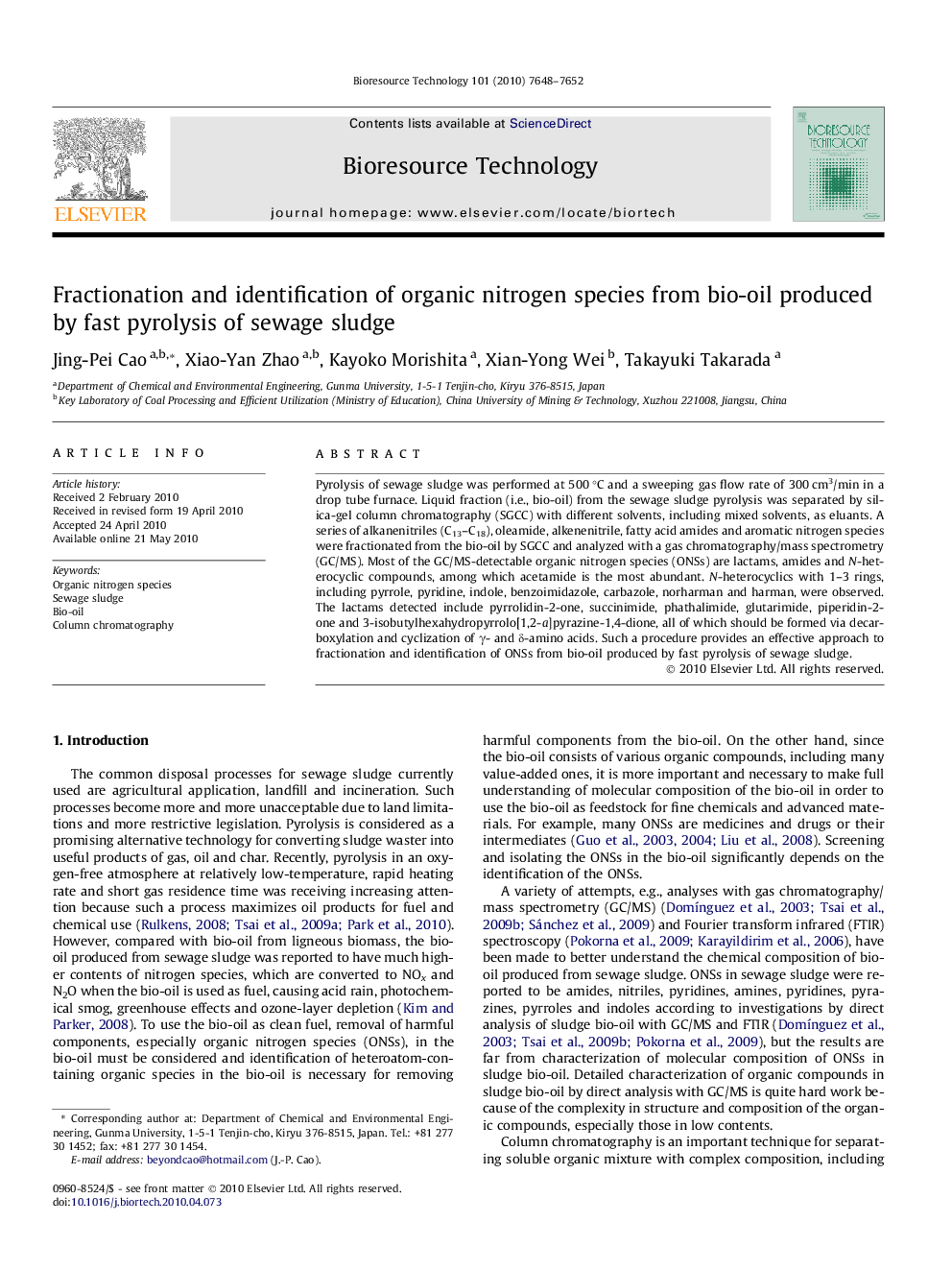| Article ID | Journal | Published Year | Pages | File Type |
|---|---|---|---|---|
| 682862 | Bioresource Technology | 2010 | 5 Pages |
Abstract
Pyrolysis of sewage sludge was performed at 500 °C and a sweeping gas flow rate of 300 cm3/min in a drop tube furnace. Liquid fraction (i.e., bio-oil) from the sewage sludge pyrolysis was separated by silica-gel column chromatography (SGCC) with different solvents, including mixed solvents, as eluants. A series of alkanenitriles (C13-C18), oleamide, alkenenitrile, fatty acid amides and aromatic nitrogen species were fractionated from the bio-oil by SGCC and analyzed with a gas chromatography/mass spectrometry (GC/MS). Most of the GC/MS-detectable organic nitrogen species (ONSs) are lactams, amides and N-heterocyclic compounds, among which acetamide is the most abundant. N-heterocyclics with 1-3 rings, including pyrrole, pyridine, indole, benzoimidazole, carbazole, norharman and harman, were observed. The lactams detected include pyrrolidin-2-one, succinimide, phathalimide, glutarimide, piperidin-2-one and 3-isobutylhexahydropyrrolo[1,2-a]pyrazine-1,4-dione, all of which should be formed via decarboxylation and cyclization of γ- and δ-amino acids. Such a procedure provides an effective approach to fractionation and identification of ONSs from bio-oil produced by fast pyrolysis of sewage sludge.
Related Topics
Physical Sciences and Engineering
Chemical Engineering
Process Chemistry and Technology
Authors
Jing-Pei Cao, Xiao-Yan Zhao, Kayoko Morishita, Xian-Yong Wei, Takayuki Takarada,
